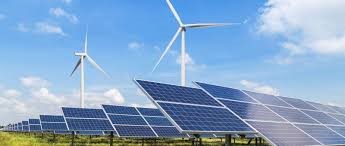This underlies the fact that South Africa is one of the countries making serious strides in renewable energy technologies. With that in place, there is an increase in usage levels of renewable sources of energy from sources like wind and solar, which are easily accessible; thus, a reason for the changing face of the country’s energy landscape. This will improve both the meeting of the energy need and offer solutions to problems relating to the environment as well as job opportunities.
As the interest in sustainability rises, a variety of projects and investments spur up all over the country. These are a challenge to funding and infrastructural issues but also open up opportunities for innovation and collaboration. This equilibrium lies in the understanding of the future of energy that exists in South Africa.
Key Takeaways
- Renewable energy accounts for the largest share in South Africa’s energy strategy.
Innovative projects leverage both their environmental and economic needs.
With challenges, there comes opportunities to be achieved to develop accordingly. - Renewable Energy Landscape in South Africa
South Africa can be seen to develop quite significantly as far as renewable energy is concerned the range of its renewable energy sources; the country has been in promotion of supportive legislation that focuses on critical growth of the country that is also based on central investment in infrastructure.
.
Legislation and government support
- Various policies ensure that the government of South Africa is truly supportive when it comes to renewable-energy-based initiatives. In this regard, the IRP provides a proper outline for the future of energy in the country as it encourages using an energy mix.
- Aside from IRP, REIPPPP makes the private sector encourage investment. Until this date, it has been relatively successful in protecting the interests of local and international investors.
- Government tax breaks and grants also provide a boost to the renewable sector. Policies have been devised to reduce the nation’s reliance on fossil fuels and to address climate change.
Investment and Infrastructure Development
Renewable energy investments are growing rapidly in South Africa. In the past few years, billions of rand were invested into solar, wind, and bioenergy projects.
Major international companies have also shown interest in the renewable market of South Africa. In return, this attracts a lot of capital injection that creates jobs and supports economic development.
In terms of infrastructure, transmission lines and energy storage systems are quite vital. The government and private sector collectively improve the grid’s reliability. Better infrastructure aids in the process of energy distribution to support and promote access in rural areas.
Sources of Main Renewable Energy
The major renewable energy sources from which South Africa can tap include solar, wind, and biomass.
Solar energy is abundant due to the fact that the positive side of the country is where the sun shines the most. Open areas have large potential that can be exploited for large solar farms to maximize power generation.
Wind energy is also high. Places like the Western Cape and Eastern Cape present perfect conditions for wind farms.
Biomass energy-from organic materials-makes up a small part of the total, but is an increasing segment. It offers a clean method of producing energy and a means of disposing of waste in a useful manner.
All these sources add up to a varied energy portfolio, improving energy security in South Africa.
Challenges and Opportunities
Transitioning to renewable energy in South Africa comes with a range of challenges and opportunities. The country is trying to harness the benefits technology while minimizing the economic and social impacts. Each of these elements independently paves the huge success of renewable energy projects.
Technological Innovations
Technological innovations are imperative in realizing an increase in renewable energy. South Africa has invested in solar and wind technologies. Companies are trying to design improved technologies of solar panels and wind turbines.
More creative ways of energy storage are also being invented. These will help in storing extra energy, which at times can be utilized during low production periods. Technologies such as battery systems will decrease dependency on non-renewable sources.
For more innovation in the future, there has to be investment in research and development. Universities and industries have to collaborate in driving boundaries. This will ensure South Africa remains competitive in the global renewable energy market .
Economic Impact and Job Creation
It can drive economic growth through the use of renewable energy. Investments in this sector may stimulate the creation of jobs. New jobs, such as construction, maintenance, and research, have started emerging.
This makes work, not only that, but it also strengthens local economies. Renewable projects can pave the way for enhanced infrastructure and services. This happens, especially in rural areas where energy access is very poor.
Economic hurdles still exist, such as the initial investment. These are areas whereby government support and incentive are capable of reducing financial burden. It makes it easier for companies to enter into the renewable field by making it easier for them to make their transition and to start conducting business with vitality and efficiency
Societal and Environmental Considerations
One significant societal issue is how renewable energy affects a quality of life. This increases due to having access to clean energy. There can be a reduction in health problems that emanate due to pollution from fossil fuel.
Some of the environmental benefits associated with this energy include low greenhouse gas emissions. This therefore encourages a healthier ecosystem. Biodiversity is usually protected as new development of energy projects continue.
However, public awareness and acceptance are in play to ensure success. Communities should be informed and included in the decision-making process. In this way, trust will be built and projects better meet local needs.

Also Read :
- How Technology is Enhancing Healthcare Services in South Africa
- The Role of Blockchain Technology in South Africa’s Fintech Industry
- How Technology is Revolutionizing Education in South Africa
- Nanotechnology in Engineering: Applications and Future Prospects
- LG Technology Ventures